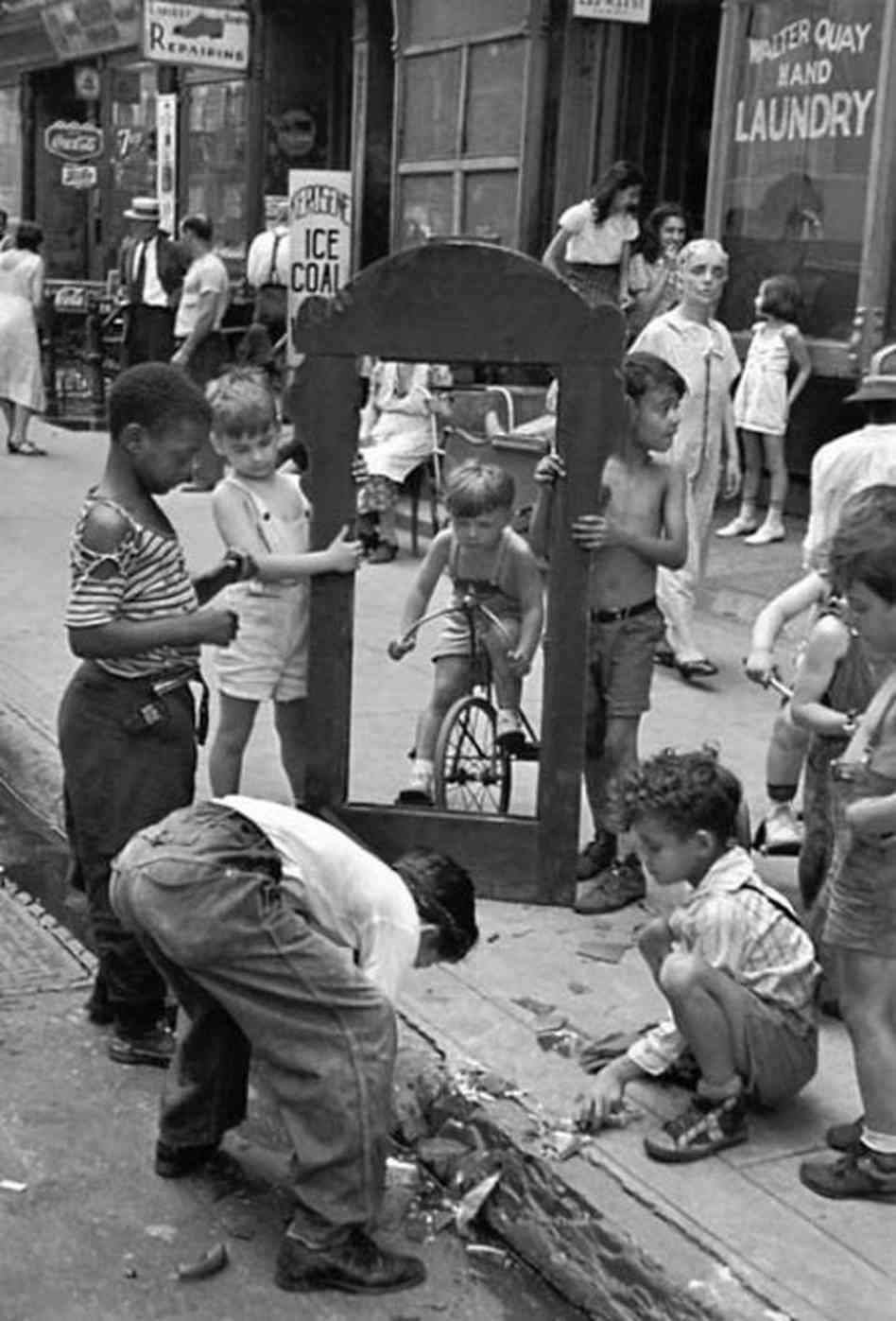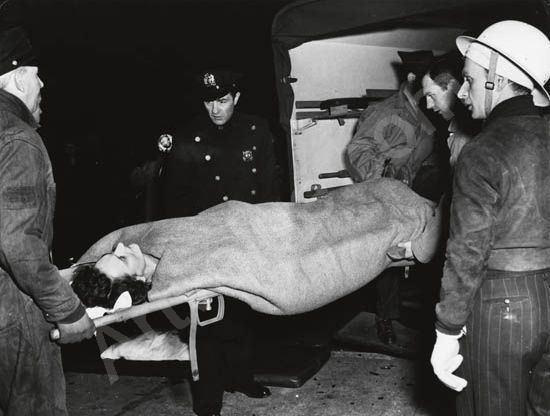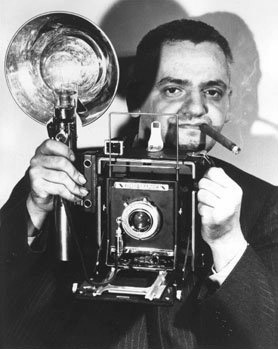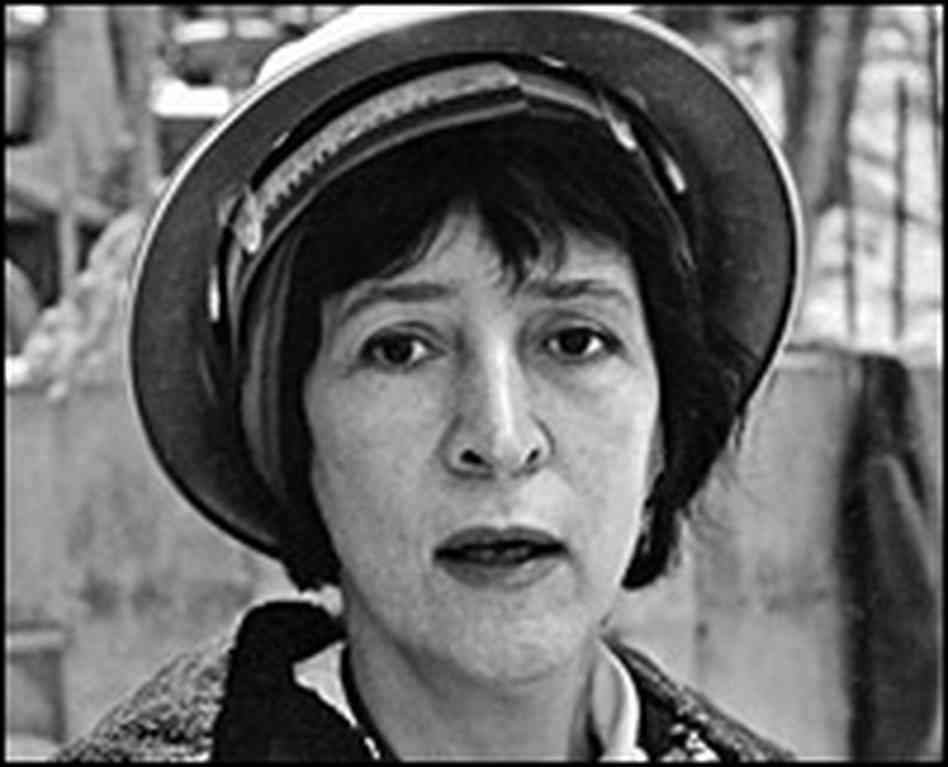Ushering in Street Photography
Compare Photo Icons Example: Text by Joseph Mayer, edited and adapted by Citizen Film.
Jewish American photographers Arthur Fellig (pseudonym “Weegee”) and Helen Levitt transformed New York street photography by ushering in new, modern approaches. Both hailed for their intense realism, Weegee and Levitt captured the little details of life in New York during the period surrounding World War II. They did not see New York the same way though, so their subjects and styles vary. Regardless of whom they were photographing, Weegee and Levitt were able to present astoundingly personal photographs by confronting their subjects head-on.
Weegee was one of the best news photographers of all time and a forerunner for the tabloid age. Born in Austria in 1899 he immigrated to New York in 1909. Weegee has described New York as, “one live-long disaster area” (Kozloff 35). A news photographer, Weegee is particularly famous for his uncanny ability to be present with his camera at all sorts of disasters in New York; he often followed paramedics and policemen to crime scenes or fires where he would desperately try to take the front page news photograph. As a result, he sometimes twisted the stories behind his photographs. Weegee was truly a master in documenting the darker side of New York.
Perhaps his best photograph of this sort is of a woman in a blanket lying on a stretcher with a policeman nervously looking down at her. The photograph appears in Naked City with, “… and the human cop” captioning it (Weegee 69). The way this particular image is framed, the woman lays horizontal across the entirety of the photograph. People at either end of the stretcher are holding her in the air, though they are not pictured in this framing. Instead, the only other feature in the whole frame is a policeman’s horror-struck face in the top right corner. The way Weegee captured this instantaneous moment of a cop frozen with helpless sympathy is what makes this photograph so iconic. The lighting in the picture is of very high contrast, and the image is almost completely black except for the man’s face and the woman, connecting them to the viewer. A policeman would be accustomed to seeing someone on a stretcher, yet his expression is aghast with inquisitiveness. Weegee’s direct and upfront viewpoint magnifies the effect of making the viewer feel as though he/she were at the disaster scene.
Helen Levitt was not a news photographer. She simply roamed the streets freely taking pictures of life, especially children, in New York City. Born in 1903 and raised in Brooklyn, Levitt was exposed to and intrigued by city life throughout her upbringing. Levitt photographed with a “grimy, earth view of the urban background” (Kozloff 33) but still managed to portray human subjects with an incredible intimacy and liveliness.
“One cares about her subjects because the photographer makes us feel they are seen with a caring eye.”
(Kozloff 32).
Levitt’s subjects were often multiple people interacting, showing New York as a community and not merely individuals. Her work transcends categorization. She shows the slums that some children must grow up in, yet does not make calls for social reform (even though she sometimes photographed multiracial scenes). She did not tend to work on assigned projects for publications or ethnographic works. Levitt even published some of her work in a book without any captions, allowing the viewer to create the story. Levitt simply captured the nuances of life for children and the rest of New Yorkers.
Levitt’s untitled photograph of New York ca. 1940 that is sometimes referred to as “Broken Mirror” epitomizes her iconic style and aesthetic mastery. The photograph is of approximately eight young children playing on the street and sidewalk in a busy part of Manhattan. Amazingly, her photograph of the hectic scene is incredibly balanced. In the direct center of the photograph is the empty wood frame of a mirror with a young boy on a bicycle visible through it. This frame within the frame provides an interesting visual. Two other standing boys hold the wood frame up on either side. Two crouched boys and the rest of the children elegantly appear to frame the actual mirror frame by surrounding it.
The resulting aesthetic design of the candid picture is remarkable. In the background of the photograph, two groups of three people share intimate conversations. Only one single woman subject in the background walking is not engaged with other people. This photograph reflects Levitt’s pursuit of subjects displaying interaction. The image captures childhood wonder and the ability of children to find a playground in anything, even the street. The fact that black and white children are playing together in the photograph adds another element of interest. Levitt has been described as having a great skill in the way she, “nicely contrasts their charade of high adventure with the humdrum reality of the street” (Kozloff 38).
In much different ways, Weegee and Levitt’s photographs are iconic for their ability to capture raw human curiosity. In “The Human Cop,” the police officer has an expression of concern over an assumed tragic incident involving the woman pictured. Five children in “Broken Mirror” stare interested at something a crouched boy is busy doing on the sidewalk. What the subjects are interested in and the tone of the photographs are obviously very different.
[slideshow_deploy id=’2261′]
The themes present in the two photographers’ work are drastically unalike as well. Kozloff describes that, “compared to such [Weegee] reportage, Helen Levitt saw New York not in collision, but as having reached out toward each other” (Kozloff 37). Though they may agree that the setting of the city is often vile and unfit for children, their outlook on the interactions of people is different. Weegee roamed the night in search of murders, fires, alcoholics, and many often negative, yet exciting, aspects of humanity. Levitt saw New York more as a city of people’s relationships. Many of her photographs, including “Broken Mirror” emphasize companionship.
The two Jewish photographers pictured subjects in ways that evoke a variety of emotions from viewers. One cannot help but feel the community feeling in New York when viewing Levitt’s “Broken Mirror” photograph. Conversely, it is impossible to ignore the emotional grief emanating from the policeman’s face in Weegee’s “The Human Cop.” Whether capturing children’s playfulness or the gore of New York’s disasters, Levitt and Weegee forever changed the scope of modern street photography.
Watch a video on street photography by Helen Levitt and/or a video on how to photograph crime scenes by Weegee.
Sources
Images
Levitt, Helen. NPR, “Broken Mirror.” <http://www.npr.org/blogs/pictureshow/2009/03/helen_levitt.html>
Levitt, Helen. Pleasure Photo Room, “Four girls running in street.” <http://pleasurephotoroom.wordpress.com/tag/helen-levitt/>
Levitt, Helen. Laurence Miller Gallery, “Girl with Flower.” <http://www.laurencemillergallery.com/levitt_just_kids.html>
Levitt, Helen. Lens Culture, “Untitled” – Baby on window. <http://www.lensculture.com/levitt.html>
Levitt, Helen. Laurence Miller Gallery, “Untitled” – Boy with umbrella. <http://www.laurencemillergallery.com/levitt_tribute1.html>
Levitt, Helen. Laurence Miller Gallery, “Untitled” – Four boys. <http://www.laurencemillergallery.com/levitt_hcb_sbs1.htm>
Levitt, Helen. Latriennale, “Untitled” – Owner with dog. <http://www.latriennale.org/en/artists/helen-levitt>
Levitt, Helen. Street Photography Workshop, “Untitled” – Street band. <http://www.streetphotographyworkshops.info/portfolio/helen-levitt-master-photographer/>
Levitt, Helen. Laurence Miller Gallery, “Untitled” – Three kids in masks. <http://www.laurencemillergallery.com/levitt_hcb_sbs1.htm>
Weegee. Weegee’s World, “Charles Sodokoff and Arthur Webber Use Their Top Hats to Hide Their Faces.” <http://museum.icp.org/museum/collections/special/weegee/>
Weegee. Weegee’s World, “Heatspell.” <http://museum.icp.org/museum/collections/special/weegee/>
Weegee. Naked City, “The Human Cop.” <http://www.artvalue.com/auctionresult–weegee-usher-fellig-arthur-h-1-the-human-cop-3511406.htm>
Weegee. Weegee’s World, “Summer, the Lower East Side.” <http://museum.icp.org/museum/collections/special/weegee/>
Weegee. Afflictor, “Untitled” – Crime scene. <http://afflictor.com/tag/weegee/>
Weegee. Fast Co Design, “Untitled” – Wax museum figurines. <http://www.fastcodesign.com/1665855/weegee-the-master-photographer-of-nyc-s-murderous-mob-heyday#1>
Weegee. Weegee’s World, “Weegee Self-Portrait.” <http://museum.icp.org/museum/collections/special/weegee/>
Videos
Levitt, Helen. Youtube, “In the Street.” <http://www.youtube.com/watch?v=fyBEWD3M5r4>
Weegee. Youtube, “Weegee Tells How.” <https://www.youtube.com/watch?feature=player_embedded&v=iP4Y_fAvOgY>


















